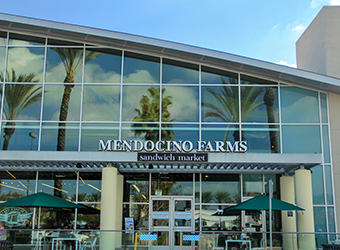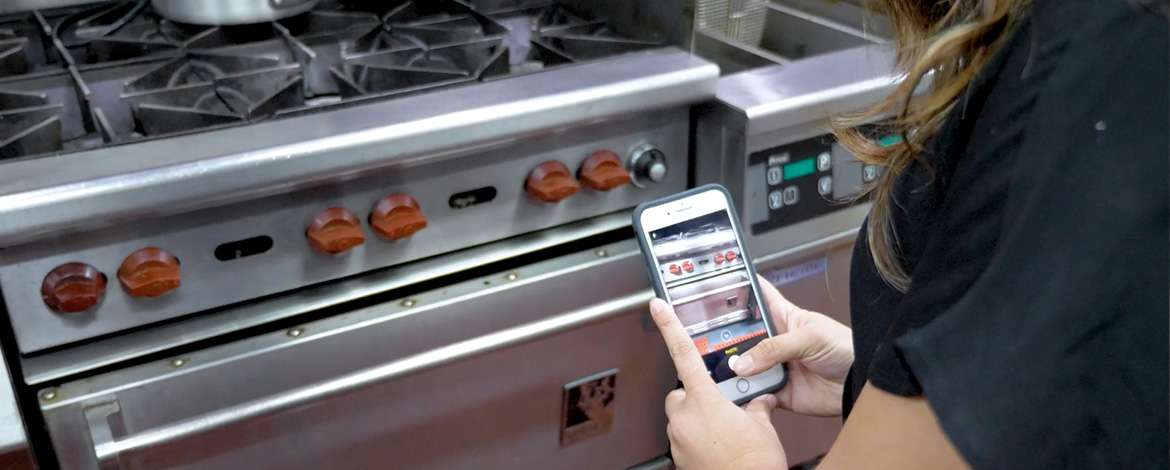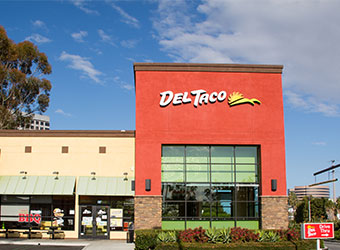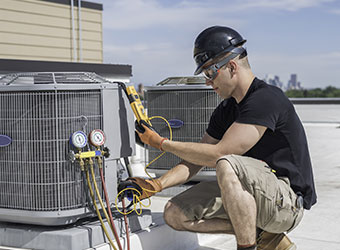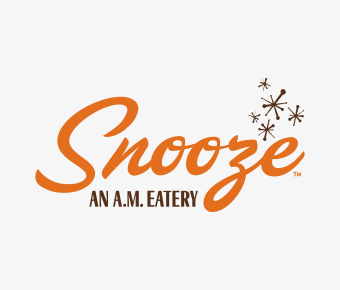According to the most recent numbers from the Bureau of Labor Statistics (BLS), there were 10.6 million job openings in November 2022 and 6.3 million unemployed workers. The difference between those numbers, around 4 million, indicates there are many more open positions than employee candidates across the economy.
Labor is top of mind for most facility operators at the moment, because it has become a significant operational issue for facility business models. Staffing challenges have led to operational disruptions, rising costs, and tighter profit margins.
The labor crunch won’t disappear overnight, so many operators are looking at diverse strategies to address the challenge. Your facility should be proactively implementing a labor strategy that approaches the issue from many different angles, from adopting creative hiring strategies to finding new efficiencies with facility management software tools.

Cost of the Labor Shortage
There isn’t one single reason causing the general staffing crunch, but a number of overlapping factors are related to the COVID-19 pandemic. Ripple effects from the pandemic continue to impact the economy, affecting everything from childcare availability to overall labor competition as industries hire heavily at the same time.
For your company, inadequate staffing undoubtedly has an impact on operations. Without enough employees, you may create a negative guest experience, be forced to cut operations or hours, and even potentially prompt a negative turnover feedback loop as existing staff face burnout.
High turnover rates have always created a large financial burden for operators, made all the heavier with the current labor market. The hiring process costs time and resources, and the disruptions to your team can hurt productivity, cause stress, and impact morale.
For most operators, fully staffing and reducing turnover are priorities. But with such complexities, where should your facility start?
For facilities professionals trying to navigate the labor shortage, there are three areas worth focusing on: hiring and retention, labor-saving facility data and analytics tools, and long-term investments.
Evaluating Hiring & Retention
At its core, facilities management is a people business. To address staffing, you should be investing in your people, from new employees to existing staff.
Always Be Hiring
In a competitive labor field, hiring should be a constant priority. While it may feel most urgent when you have a specific position to fill, consider listing “evergreen” job postings for your team to ensure you always have candidates in the pipeline.
As you invest in your hiring process, evaluate your system as a whole. Are candidates able to apply for positions, quickly and without a hassle? The more you can streamline the process for potential hires and your hiring managers, the better for your operations.
Offer Competitive Wages, Benefits, and Bonuses
With a tough hiring environment, your wages and benefits for your open roles should undoubtedly be competitive in the facilities industry. Make sure to list specific wage and benefit information in your job descriptions, rather than wait until the interview process, so that you communicate it clearly to potential applicants.
If you are considering expanding your benefits, use surveys or listening sessions with existing employees to understand their priorities. You may find that certain specific benefits, from childcare rebates and tuition reimbursement to a commute subsidy, stand out to your potential hires.
Finally, leveraging hiring bonuses as an incentive can help generate new applications. These bonuses should be paid out promptly after a strategic time period, such as three or six months, to encourage new hires to stick through the initial training period and become engaged with the company.
Invest in Employee Retention
While you may need to focus on hiring, don’t lose sight of the valuable staff you already have on your team. Retaining employees is generally healthier for your bottom line than hiring new ones.
Using the above example, if you are offering hiring bonuses, consider implementing retention bonuses to recognize valuable long-time employees as well (which also shows your new hires that your company prioritizes staff appreciation).
In addition, while wages and benefits certainly are important to employees, many staff members also care deeply about their big-picture career opportunities. Investing in employees is a critical retention strategy, covering programs from training and employee development to prioritizing promoting from within the company.
Make the Most Out of Facility Operational Spend
For many facility operators, investing in technology and automation can help counteract rising labor costs. If you are struggling to hire enough staff, you may want to consider investing capital in other places, like automating time-consuming processes and reporting.
Streamline Scheduled Labor Costs
Your labor data can help you find how to best streamline your labor spend, without negatively impacting employee retention or guest satisfaction.
Sales forecasting uses historical sales data and current market conditions to project sales in comparable time periods. Sales forecasting empowers your scheduling managers to make schedules based on data, rather than “what we always do” guesses.
Your data can also showcase trends and help you refine labor costs over time. Granular info like labor spend by day part or by role can allow you to evaluate where tweaks are needed based on labor cost as a percentage of sales goals.
Look for Operational Efficiencies
Facilities management requires tracking many moving pieces and completing repetitive tasks. The more operational efficiencies you add in through all-in-one facility management software, the more you can streamline labor costs.
For instance, mobile-first facilities management technology can add time savings for your staff. Not only can you place service requests on the go, you can also increase accuracy by including photos, videos and manuals to work orders. With approvals, proposals, and invoices accessible via mobile, your team can find new efficiencies in their workload without adding new labor costs.
Facilities data and analytics software can add in other efficiencies in areas like equipment status tracking. A central dashboard can track real-time equipment costs, repair and maintenance costs, and warranty info. By proactively staying on top of the equipment life cycle, your staff can easily calculate whether to repair or replace without a time-consuming (and uncertain) manual process.
Automate Wherever Possible
Finally, using facilities management software to automate operations creates direct labor efficiencies and also improves the accuracy and relevance of your equipment data.
As an example, automation can help streamline work order management, building a smooth system for creating, assigning, and tracking work orders. Managers can be prompted through customized workflows to quickly approve work orders and invoices. Facilities software can also automate equipment warranty monitoring, even diving down to varying levels of manufacturer, service provider, and component part warranties.
Overall, automation can streamline staff responsibilities, using custom workflows to remind key staff about scheduling preventive equipment maintenance services, reducing downtime and increasing equipment lifespan.
Addressing Labor in the Long-Term
While some components of your labor strategy are urgent in the short-term, there are also big-picture priorities across your facility to consider in your strategy.
Prioritize Continuity in Operations
Although it isn’t ideal, operators should be preparing to potentially experience elevated levels of turnover for an extended period of time. To ensure minimal disruptions, make sure to plan for continuity in your operations.
Your technology tools are a central part of this strategy. A Computerized Maintenance Management Systems (CMMS) can ensure your team is tracking facilities spend, assets, and warranties in one central, secure location. No matter any turnover, this data is searchable and accessible.
With the right facilities management software, staff and leadership can get a complete understanding of facility spend and service history, broken down into asset, location, or repair type. A centralized, up-to-date database is key to absorb any potential turnover disruptions in your team.
Involve Leadership in Strategy
Finally, with the current labor market, staffing is no longer a concern just for the facilities-level managers. Addressing the labor shortage should be considered a major operational priority for facilities leaders, from the location-level all the way up to company leadership. Just as leadership and management set the tone for a healthy culture, the team is also able to influence the overall labor approach.
From the C-Suite throughout the rest of the organization, consider making hiring, retention, and staffing a visible priority and resource appropriately. Leadership can direct investment to new hiring and retention initiatives, or take the lead in supporting the shift to new facilities management software tools and solutions.
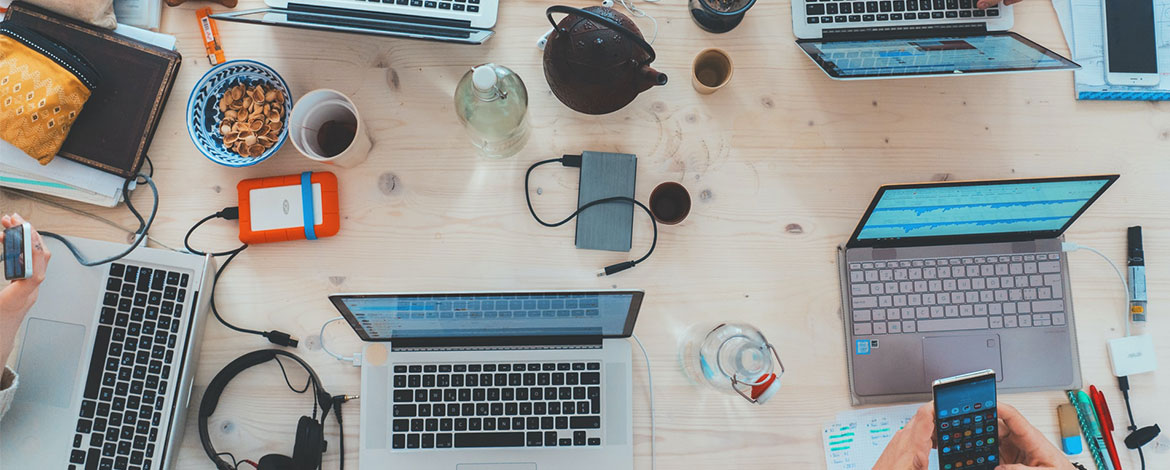
Find Success in a Challenging Labor Market
There are many different strategies to address today’s labor challenges. But with a focus on staffing efforts, technology efficiencies, and long-term thinking, your facility can turn these challenges into more streamlined, efficient operations and a thriving team culture.
If you are exploring how facility management software can help your company navigate today’s challenges, consider exploring a facility management software solution such as Ecotrak. Using a Computerized Maintenance Management Systems (CMMS) can empower your staff to thrive and help you add new automations and efficiencies into your facilities operations.
Request a demo of Ecotrak today.
INDUSTRY INSIGHT
What's Happening at Ecotrak
It happens at home, just like it happens on the job. You take the time to research appliances, shop around for the best rate, set up your kitchen just the way you like — all in time for something to break down without warning. But while at home you might be able to scrape by without a stovetop for a few days, when it comes to work, inability to function means inability to serve, which means inability to open your doors.
Asset lifecycle management brings predictability to the unpredictable. It allows you to maximize your investment, minimize time spent grappling with adversity, and utilizes the latest in metrics and data analysis to help you learn how you can get even more value out of your appliances.
If you have a good asset lifecycle management plan in place, the three factors listed below are friendly, not fearsome. If you don’t, well, you’re operating like a chef with both hands tied behind his back.
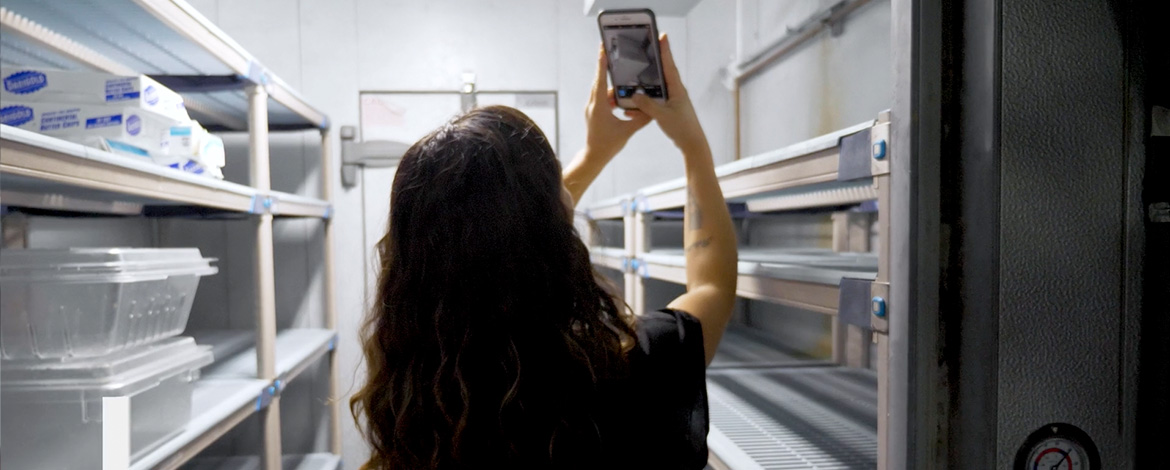
Knowing what the future holds
Every asset has a natural, four-stage lifecycle: Planning, Procurement, Operation/Maintenance and Disposal. Whether your restaurant’s kitchen is shiny and new, or you’re acquiring equipment that already has a few years on the odometer, each item is at some stage of this lifecycle.
If you’re in the early days of a small operation, you might be able to keep track in your head of what’s new, what’s old, and what’s being held together with duct tape. But when your business becomes multiple locations, with multiple kitchens, and you’re making significant investments in ovens, deep fryers, refrigeration, beverage dispensers and more, it can very quickly overwhelm any facilities management team.
A smart business has the foresight to consider the entire lifecycle before even moving beyond the planning phase. As you’re researching manufactures and considering which model is right for your needs, you should also be analyzing likely maintenance costs, the average lifespan of the asset, and what kind of daily wear-and-tear it will endure in your kitchen. As you move into procurement, it’s vital that you activate and track all warranties, have serial numbers and model identifiers at the ready, and that each asset is installed and powered properly. Then, as you move into the operation and maintenance stage, issues can be overcome quickly and efficiently — with information at your fingertips that will prevent duplicate service calls and costly ignorance of the asset’s warranty eligibility.
By predicting when an asset will reach its optimal peak performance and leaning into that window, you can calculate its depreciation value, ensure compliance with regulatory standards and most importantly, keep your business up and running.
Planning a repair and replacement budget
Unfortunately, breakdowns are every bit as unavoidable as death and taxes. At that point, a key question presents itself: Is it worthwhile to repair the asset? Or is it time for disposal and replacement?
This is one moment where, if you have good asset management software to back you up, you’ll be empowered to turn a crucial decision into an educated one. For starters, every breakdown is a learning opportunity. A CMMS platform should compile and analyze them, across all your locations, so you can answer questions like: What’s my most commonly-occurring problem? What’s my most expensive problem? Is one manufacturer brand outperforming another?
If you have Ecotrak as your facilities management software solution, it’s simply a matter of any authorized person in your company taking out their phone, opening the app and looking under Ecotrak’s proprietary “Decision Making Tool,” designed by restaurant and finance veterans with such a moment in mind. The tool displays personalized details about your asset, its original value and likely cost of a replacement. It also offers an estimated useful window of service (based on the hive-mind experiences of other users) and reminds you where yours is in that likely lifespan.
The “Decision Making Tool" or DMT — whose icon is a weight-balance scale, to underscore the plus/minus decision being weighed — then gives you a likely estimate for your repair, shows you how much you’ve spent already over the lifetime of the appliance, and offers an easy-to-read gauge system to make the choice even more transparent. If the needle is in the red, it’s likely time to replace; if you’re in the green, a repair is the more reasonable choice. But perhaps most helpful is the small yellow section, indicating that while you’re safe for now, it would be wise to begin setting aside funds for a replacement in the near future.

Facility management dependence
Whether you have dozens of locations, or simply dream of getting there someday, it is crucial that you monitor the lifecycles of your assets.
Ecotrak maintains information specific to the asset, then makes it available to both the customer and the service provider, enabling a smoother interaction. From manufacturer to model to serial number, to the ability to track warranties on three different levels (manufacturer, service provider and the often-overlooked component warranties), to documentation and saved photos of the actual equipment, everything is available on the app with a few swipes of a finger.
Another great tool is the custom flagging feature. Imagine if you or your management team could run a report for a designation such as “earmarked for replacement,” immediately pulling up every asset in your company approaching that final stage of the lifecycle. Keep in mind, this is real time information, provided up-to-the-minute by those you have designated at various locations. If a manager came in to find a broken dishwasher during the morning shift today, that could be on your report. This flag feature allows you to build your budget, anticipate work to come, and increase visibility and communication — and keep in mind, you can make as many flags as you need for subheadings like “inspection needed,” “ready to be cleaned” and more.
All this asset lifecycle information, of course, informs your company’s facility management efforts, and vice versa. With a company like Ecotrak, it’s all under one convenient umbrella, constantly updating data that you can view, adjust and share from your mobile device or desktop. So, if you want to see the problems costing the most money across your company, or the ones occurring most frequently, you can do so with precision; if you’d like to view your company’s spend by asset (who knew that maintaining the soft serve machine and grease trap costs as much as the HVAC?), or monitor which vendors are taking the most average days to complete a work order, all that information is similarly up-to-the-minute and ready for a deep-dive analysis.
The bottom line
When it comes to asset lifecycle management, you can either be driving the train or, if you’re not careful, get run over by it. Imagine all the considerations listed above, multiplied by a dozen locations — or a hundred, or a thousand. Whether you’re talking about Del Taco managing 300 corporate locations with their Ecotrak software, or other existing partners like Outback, Burger King and Lazy Dog, it’s easy to see why a software solution for overseeing your assets is a no-brainer.
INDUSTRY INSIGHT
What's Happening at Ecotrak
When you joined the restaurant industry, you wanted to nourish people’s hearts, souls and stomachs. You likely dreamed of helping create a gathering place where co-workers could get together for a happy hour, families could celebrate a birthday, or friends could catch up over appetizers. The last thing you wanted to deal with was work orders, broken equipment and invoicing. Which is where facility management software comes into focus.
A competent software solution provides invaluable infrastructure to a business, allowing many daily headaches to be eased by a streamlined, proven system; a poor choice, however, could just compound those headaches. With that in mind, let’s take a look at what facility management software is, and how it can help you get back to the things you really care about.
Facility management software also called a computerized maintenance management system (CMMS) is a software that maintains a database of information about an organization’s assets, repair and maintenance operations. Businesses can place services requests, manage workorders, communicate with vendors and analyze data from a dashboard, thus helping facilities managers (FMs) do their jobs more effectively.
The benefits of good facility management software can be broken down into three categories. In some ways, each feed off the other; in a perfect world, they serve your business like a good insurance policy — operating quietly in the background, while giving you piece of mind.

1. Data analysis
Robust, customizable reporting empowers you to make more educated business decisions. Viewing your spend data by such variables as equipment type, location and manufacturer affords greater insight into what’s costing you money and why.
Years ago, such data was mostly anecdotal, and most analysis had to be based on gut feelings. The more locations your restaurant opened, the more difficult it became to spot trends, know which equipment was giving you the best bang for your buck, and adjust plans accordingly. Today, if you properly track your facility management issues, it’s so much more than simply getting a grill fixed.
Every time a new piece of equipment enters one of your locations, you take a few moments to share information about its make, model, purchase date, warranty and other such details. A good facility management system will take it from there — no matter how big you get, no matter how much equipment you need to track.
When equipment breaks, rather than picking up the phone, texting, emailing or searching online for who to call, you simply place your request through a solution like Ecotrak; information is extrapolated from your original registration, a work order is created, and you get updated every step of the way as the equipment is repaired — even allowing the service provider to invoice you, and integrating with your own accounting software if you so choose.
When you have your spending monitored and your profit & loss performance maximized, that eliminates guess work and allows you to manage your operations much more effectively. It also empowers you on the fly to ask and answer questions like:
“What’s my most expensive problem?”
“Is one manufacturer brand doing better than another?”
“Is there a model within that brand that might be outperforming another model?”
A good facility management solution will provide immediate answers to these and other questions in easy-to-understand, highly-interactive graphs and models that bring you the next-level facility management data and analytics a growing business requires. By staying ahead of your asset’s needs, you can maximize its lifespan and minimize energy consumption — both important factors in sustainability. A good facility management solution also automates industry, state and federal regulations that require documentation of work and compliance.
Imagine having such information at your fingertips, and how it could assist you in making educated, data-driven decisions for your business.

2. Increasing Efficiency
If you aren’t actively tracking your refrigerant use and considering ways to redirect spending towards greener products, you aren’t doing your best to reduce carbon emissions, provide a healthy and clean environment for customers and employees, and save money on energy costs and compliance. If your aren’t budgeting for futures breakdowns and replacements based on past breakdowns and replacements, you aren’t properly budgeting and anticipating work to come.
Good facility management software gives you a wider overview. The ability to manage vendors, receive proposals, request service, handle invoices or approve work orders should be at your fingertips, using cutting-edge technologies and easy-to-navigate mobile apps designed with the operator in mind. A good facility management solution will give you this information in real time, allowing you to instantly see the status of every work order and the service history of every product, as well as its cost.
Typically, it also empowers those around you, allowing you to focus your time and energy elsewhere. If a manager at a location in another state comes in tomorrow morning to find a misbehaving refrigerator, as long as they are authorized, proper servicing is at their fingertips. When they submit a service request, you can set yourself and others up for approvals — and redundant requests are rooted out, eliminating the cost of mistaken visits from double-booked service providers. So when the next manager comes in for the night shift and encounters the same problematic refrigerator, their service request would result in an alert that the problem is already being addressed.
A system like Ecotrak — designed by people with a long history the restaurant and hospitality industry— provides an app that allows the user to execute such service requests in moments, as well as approving work orders and invoices with a swipe of the finger. It’s also a communication tool, enabling not only messages with service providers, but also a reviewable record of such communications. The app’s clear interface empowers the user by displaying the estimated life of equipment, its current age, and spend vs. replacement costs.
It takes about 30 seconds to find your restaurant location, select your problematic piece of equipment, type what’s wrong and if you’d like, upload pictures. At that point, you hit “submit” and can go back to work, knowing the ball is rolling.
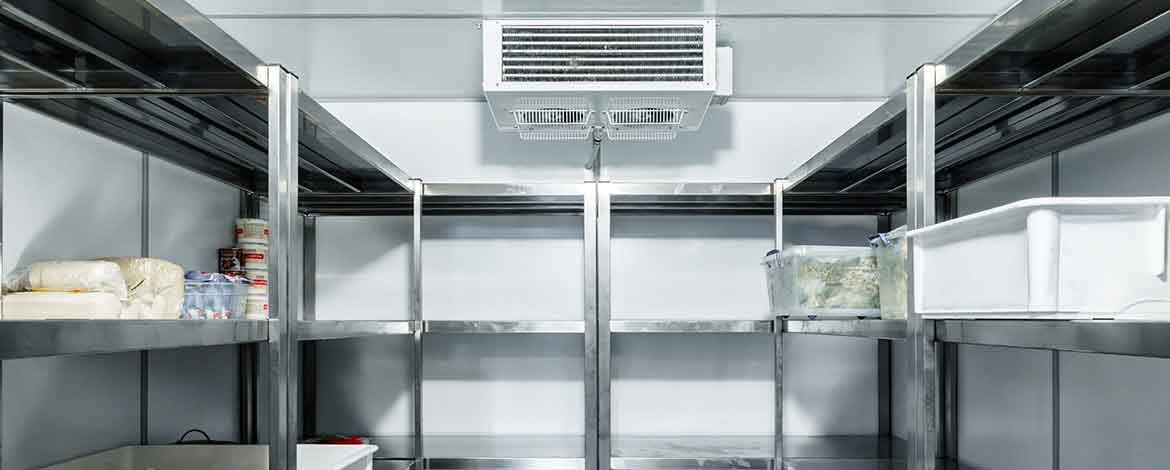
3. Saving money
On average, Ecotrak users find that warranty, call aversion and troubleshooting savings result in a 5 percent reduction in maintenance spending, one that typically has the software paying for itself in about six months.
Working with such industry-leading brands as Applebee’s, Fresh Brothers, Lazy Dog, Burger King and Buffalo Wild Wings, Ecotrak facility management software is constantly updated with cutting-edge industry advancements and insights, bringing users the latest ways to track their spending. Some have a handful of locations and big plans to grow; others use Ecotrak across thousands of locations.
Taking a unique, asset-first approach, Ecotrak tracks all things related to facilities and assets, giving you a snapshot of not only what you’re spending but where the money is going, what it’s being spent on and with which vendors. This results in a starting point to drive cost-saving initiatives and cost-reduction initiatives while gaining valuable insight.
There are 3 ways the company saves its restaurant operators money: Tracking warranties (and making that information available to both the operator and the service provider), spotting duplicate service requests (eliminating redundant service call charges), and troubleshooting. On average, Ecotrak customers save 5 percent on their repair and maintenance spend, empowered by AI-driven technology that allows them to manage spending, improve capital planning and better forecast the future.
The Ecotrak desktop interface has the same functionality as the mobile app, but adds in summary information and increased settings flexibility. All told, information is power, and a good facility management solution empowers you with granular data, viewed in a wide, flexible array of options.
INDUSTRY INSIGHT
What's Happening at Ecotrak
Image Credit: Mendocino Farms Sandwich Market
Mendocino Farms opened its first cloud kitchen in Long Beach, California in November 2020. We caught up with Gene Davis, CRFP, Senior Director of Facilities, to talk facility management technology, cloud kitchens and how the brand fared during the pandemic.
Mendocino Farms recently implemented Ecotrak Facility Management Software. Why did you go with Ecotrak?
We were with ServiceChannel, and we switched to Ecotrak. I've spent a lot of time with ServiceChannel. I rolled out ServiceChannel in my last two companies, and Mendocino Farms already had ServiceChannel. I knew about Ecotrak, and after seeing their demos, I decided to switch. ServiceChannel served us well, but Ecotrak is more intuitive, easier to use, has more analytical tools, and for our younger managers, it's mobile-based and just a cooler technology. The other reason is the price. ServiceChannel and Ecotrak offer similar features, but ServiceChannel tacks them onto the price. Everything was a la carte. With Ecotrak, we get one price and all the features, and that was appealing to us.
How has your customer experience been with Ecotrak?
I've received great service during the transition. With ServiceChannel, if you have a problem, there's a help desk. You submit an email and it goes back and forth. Ecotrak has amazing support. They have somebody manning the phone 24/7. If I have a question, I like to pick up the phone and talk to somebody versus typing a message like a service request and then waiting for an email response. I’m in California; my stores are in California, and Ecotrak is based in California. I'm excited about having a better support system. That was a big factor.
How is the transition going?
It’s good. We have a client success person, Michael, who is great. It was easier than I thought it would be. The salesperson said, "This is going to be really easy." And I said, “Okay, great,” but I was skeptical. Nothing is easy, especially in facilities. Anything that can go wrong will go wrong. But we've had weekly calls. They've done a lion's share of the dirty work: the loading of assets and PMs. We're about to start the final phase: training. They have a great trainer and training program.
How have your restaurants fared during the pandemic?
Our brand is delivery heavy. That’s one of the reasons we've done so well during the pandemic. The brands that had drive-through and delivery in place made it through.
The company opened its first ghost kitchen. Why don’t you call it a ghost kitchen?
People call them ghost kitchens or virtual kitchens, but we say cloud kitchens. “Ghost” sounds like there's nobody there, but there are lots of people at our cloud kitchen.
Did Mendocino have a cloud kitchen before the pandemic?
No, we opened one in the middle of the pandemic. At the time, opening restaurants was difficult. It was easier to open a cloud kitchen. It shares a facility with 12 or 13 other concepts.
What challenges did you face with opening the cloud kitchen?
Two ways. They can use popular food-delivery apps, such as Grub Hub, Uber Eats, Postmates or Door Dash – we partner with all of them – or use the Mendocino Farms app. Customers can also pick up their orders. The facility has food lockers. A staff member tells them their locker number. It’s contactless since they paid on the app. On our website, it's promoted as “Long Beach Kitchen – Delivery and Pickup Only” to make that clear for guests so they don't get dressed up and show up for dinner at that location.
Does the cloud kitchen support catering?
Yes. Pre-pandemic, catering was an enormous part of Mendocino Farms’ business. We were known for our catering. So, we hope, as people go back to the office, and things slowly go back to whatever the new normal is, that we will be catering a lot more out of Long Beach.
Are there more cloud kitchens in Mendocino Farms’ future?
We've had great success with the first one. Sales are great. The Operation is great. So, we're looking at a couple of different sites – one by Berkeley and one in San Francisco. The small footprint makes it easier to add more to our portfolio. We're convinced that adding more kitchens will strengthen our brand.
What trends have you noticed?
Consumer behaviors have transitioned to online ordering. People like having their groceries delivered because of the convenience. This translates to cloud kitchens well. People will continue ordering food online for delivery or pickup. People get into a routine and it becomes the norm. People are used to it. They're comfortable with it, and they like the new way better in some cases.
Gene Davis , CRFP, is the Senior Director of Facilities at Mendocino Farms Sandwich Market.
INDUSTRY INSIGHT
What's Happening at Ecotrak
Restaurant operations are unpredictable. While the primary focus is on the guest experience, restaurant equipment and building systems malfunction, diverting attention from the guests. Technology simplifies facilities management, allowing restaurant operators to quickly act on issues, feel confident that the resolution is underway and return to the guests.
Facilities management software enables restaurants to manage their entire repair and maintenance program from a website dashboard or mobile app. The software is designed to help businesses save time and money by managing their buildings, equipment and vendors more efficiently and effectively. Here are 9 Ways that adopting facilities management software can help save you time and money so you can focus on what’s important, your guests:
1. Submit Work Orders on the Go and in Seconds
As you go about your day and see something that needs repair or maintenance, open the mobile app of the software on your phone, find the problem equipment, select the problem from a library, add photos or videos, and submit the work order.
2. No Need to Search for Vendors When Repairs are Needed
Skip online searches for qualified and reliable vendors and hoping for the best. Facility management software stores vetted vendors who can be automatically assigned to work orders and dispatched. It also provides a searchable directory of all approved service providers to give operators more options. Quotes and contracts can be stored as well, eliminating the need to hunt for the information.
3. No Need to Hunt for Warranties
Don’t spend time digging for warranty information in your emails, files or spreadsheets. Facility Management Software stores three levels of warranties: manufacturer, service and parts, as well as expiry dates and contact information. Each time a work order is submitted, the system alerts if a warranty is in place. If there is an active warranty, the technology routes the work order to the appropriate manufacturer, warranty company or service provider, maximizing savings. After the warranty expires, the software re-routes the work order to the assigned service provider.
4. Set It and Forget It Preventative Maintenance
Instead of relying on your memory, Outlook calendar or vendors, facility management software can manage preventive maintenance services for thousands of locations, so you never miss a service and ensure you comply with safety standards. You can automatically create work orders for cyclical services each month, quarter or year. The work orders are sent to the assigned service providers, and restaurant staff is alerted. When service is complete, the vendor can upload before-and-after photos for review before an invoice is sent. An at-a-glance report shows all completed and pending preventive maintenance services.
5. Extra Eyes and Ears
Empower other restaurant area leaders to submit work orders when they see an issue. Workflows can be customized whereby submitted work orders must be approved before dispatching a vendor. It should support multilevel approvals, all processed within the software, which eliminates the need to solicit approvals by phone or email.
6. Spend Less Time Onboarding Your Equipment
If you’re opening a new store or have decided to implement facilities management software for an existing store, the right solution offers fast and easy onboarding of your equipment. Your software partner should provide a few convenient onboarding options:
- Partner with an asset survey company.
- Enable bulk upload of existing equipment.
- Upload photos of equipment and ID plates from mobile devices or desktop. A value add is an asset verification process that includes checking for existing warranties to maximize savings.
7. Automatic Invoicing
Vendors submit invoices through facility management software, which integrates with third-party accounting software, ensuring all activity is tracked. At-a-glance reports show completed work orders, missing invoices and payment dates if questions arise.
8. Data-Driven Repair and Replace Decisions
Don’t agonize over repair and replace decisions. Let the data help you decide. Leverage the rich, real-time data captured in the facility management software to review historical work orders, equipment expenditures and lifecycle that clearly indicate whether it’s time to replace or repair the equipment.
9. Minimize Downtime
Scheduling preventive maintenance services, tracking work orders and translating the inputs into actionable data impacts guest experience by:
- Ensuring equipment and building systems are running optimally
- Extending the lifespan of equipment
- Reducing failure risks, downtime and even closures
Attending to these issues efficiently is critical so operators can return to creating great guest experiences that keep customers coming back.
Shawna Moore is the Director of Marketing at Ecotrak Facility Management Software.

